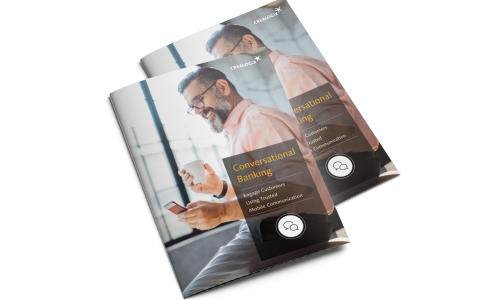The Game Changer: Digital Customer Relationships
Even though bank customers in Asia are considered more technically-adept and mobile-savvy when compared to other markets, many remain loyal to their retail bank and visit their branch in person when they want advice. The branch is seen as a place for personal conversations.
By Oliver Weber, CEO, CREALOGIX Group
While coronavirus has forced branches to close, it has also shown that it is possible to go digital. A number of surveys are in agreement that customers are now more open to switching banks. The decisive question here was the availability of digital services and whether they can be provided in line with demand.
Banks that previously hid behind the excuse that only personal advice given in-branch could create value are now playing catch-up and investing in the digital race. Indeed, the challenge for banks today is turning long-standing customer relationships into satisfied and loyal online customers.
An Established Branch Network No Longer Promises Growth
Rigid opening hours and fixed in-branch appointments available only Monday to Friday do not offer customers the ability to make use of a service when they need to.
However, the lack of reduction in the amount of banking activity over the past few months has given banks proof-points where they can make savings in the future. Not only will banks reduce the number of their branches, but there will also be a massive shift-to-digital and online. Digital ecosystems will offer customers a range of new financial services from one single source.
And investments will always encompass the concept of innovation: no modernization will take place without open APIs, in turn, this will pave the way for new online services.
Digital Expansion, But Is It Unorganized?
So how can existing banking relationships with customers be managed more comprehensively online? How can banks convey values such as trust and security online and yet at the same time meet customer expectations of spontaneous, dynamic online channels?
Many banks would answer this question by saying improved customer engagement is the answer, and most have been successful in this endeavor. Mobile tools and services have generally led to customers making more frequent transactions.
Digital Banking Environment in a Comprehensive Way
However, transactional engagement does not necessarily build emotional connections and create the kind of trust that banks need to foster advisory relationships with their customers. Adding disorganized individual projects, more apps or bespoke new online services into a bank’s service offering will not help the bank achieve its goal if they are not integrated into the overall digital banking environment in a comprehensive way.
For example, an online mortgage service can be deployed quickly, an instant payment app can ensure contactless payment service, and a Robo-Advisor can recommend the next investment transaction to make. However, services on their own often come with a catch:
- They are not integrated and the customer cannot get a complete overview of their affairs
- Based on the project in hand, customer experience is implemented in different ways within a company and can confuse the customer
- Imaginative names for individual service offerings make it impossible for customers to recognize the overarching brand
- And finally, the customer has a wide range of touchpoints. Depending on the service or support request, they have to consider different channels, times and even costs.
New Dialogue Options Through Conversational Banking
How can financial institutions operate better if they continue operating using an outdated growth model which defines personal visits to a branch as the most important method to make sales?
The bank of the future must be able to interact in new ways with customers using methods and tools that bank customers use in their everyday lives. Customers want to use in-app chat functions and well-known messenger services to communicate.
Digital Interaction
If they deem it too difficult with their bank, customers will switch to new Fintech solutions as they are easier to interact with.
Conversational banking brings together the digital interaction possibilities that take place with the aid of human and non-human support on messaging platforms using voice and text-based dialogue.
Fully-integrated conversational banking means that requests directly trigger transactions in the core banking system without any issue.

Simple use cases can be mapped quickly, including
- Increase transactions in the area of investments
- Mortgage brokerage and extension
- Smaller standard interactions without higher added value
Conversational and Open Banking Point the Way to Success
Digital communication offers the ability to scale efforts but requires fewer resources. However, it needs to be integrated into core systems, otherwise, new digital business models will not succeed. The best customer experience is achieved only when efforts are aligned, and communication channels are consistent.
Therefore, it’s essential that an uncomplicated dialogue between bank and customer adds value throughout the entire process. This way, banks achieve the benefits of Open Banking – an open ecosystem that integrates new digital services quickly and enables simple forms of dialogue with customers so that they can use the new channels.
Oliver Weber has been CEO of the CREALOGIX Group since January 2020 having previously served as CEO of CREALOGIX Switzerland from September 2018. He has successfully adapted the transformation program to a Software-as-a-Service (SaaS)-capable product platform in the Swiss domestic market and is now managing its implementation internationally. He has been a member of the Group Management Board since the beginning of 2019 and has extensive international management experience in the IT and the financial sector.












